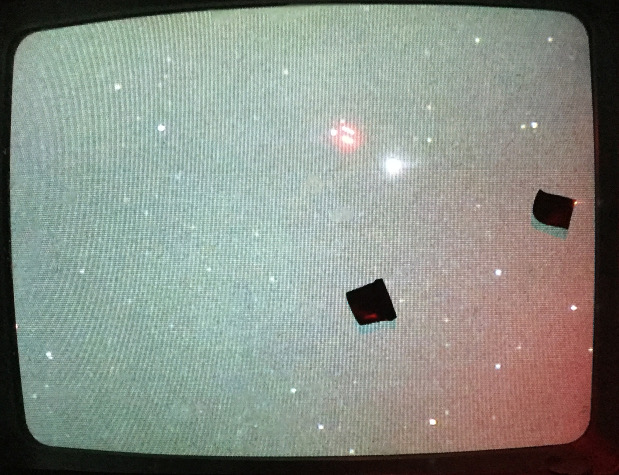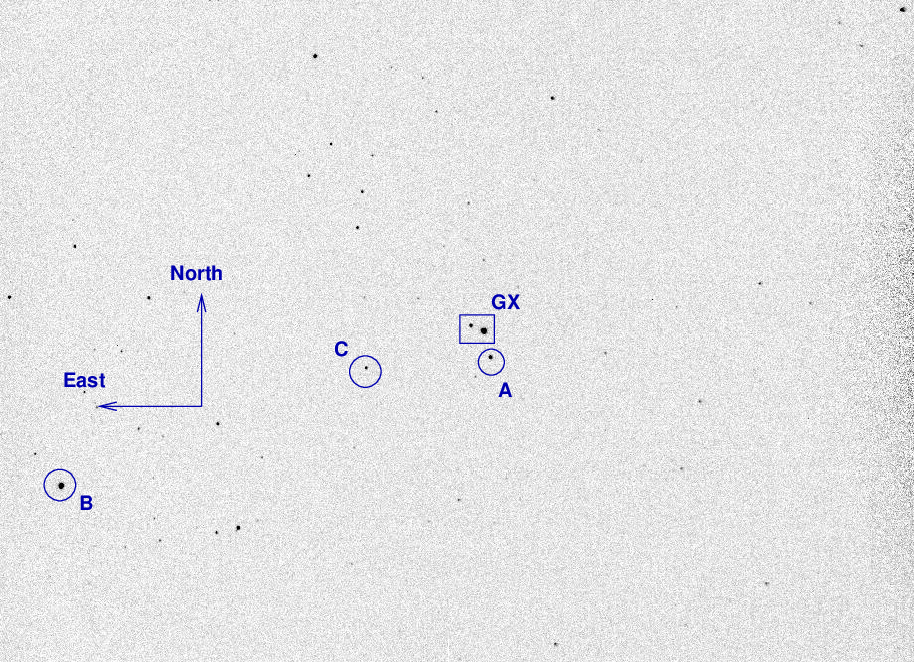
On the night of Jul 30/31, 2022, under very good conditions, I acquired images of
These are the first measurements of these two stars I have made since Feb 21, 2021 -- over a year! I will try to acquire semi-regular astrometry of these two stars, once a month or so, at least into the winter.
These measurements differ from all the previous ones in a couple of ways:
In other news, I also attempted to set up a second guide camera -- an Orion StarShoot Autoguider -- on the 14-inch telescope in the roll-off structure. Rather than placing it in an off-axis-guider unit, attached to the main telescope, I mounted this unit on a 90 mm f/11 guide scope which sits piggyback on the 14-inch. Unfortunately, there appears to be some communications error between the guiding software I'm using, PhD2, and the AP GTO 1200 mount. I'll try to solve these problems another night.
This is one of the stars that a capstone student may study over the next year in a project involving parallax. Ross 248 is a relatively faint red star surrounded by many other stars of similar brightness, so it's a good candidate for high-precision parallax measurements.
These observations involved:
The object is (currently) near position
RA = 23:41:55.27 Dec = +44:10:06.38 (J2000)
A chart of the field is shown below. The size of the chart is about 41 x 27 arcminutes. The noisy area at right (West) is the shadow of the guider's pickoff mirror.

I've marked the location of several comparison stars.
star UCAC4 B V r ------------------------------------------------------------------------- A UCAC4 671-120730 12.617 10.689 B UCAC4 671-120688 C UCAC4 671-120749 10.987 10.663 P kappa And 4.06 4.14 --------------------------------------------------------------------------
I took a photo of the finder TV's screen when pointing to Ross 248; this could be a useful reference for the future:

Here are the positions I've measured so far. The most recent measurements are at bottom right.

Like Ross 248, GX And is a nearby (binary) star which will be the target of a parallax project in the coming year. One of the two components is bright -- about mag V = 8 -- so one must use short exposures to prevent it from saturating the detector. That may mean that this system isn't as easy to measure as Ross 248 or some others.
The object is currently close to this position:
RA = 00:18:28.4 Dec = +44:01:31 (J2000)
but it does have a very high proper motion.
A chart of the field is shown below. The size of the chart is about 41 x 27 arcminutes. The noisy area at right (West) is the shadow of the guider's pickoff mirror.

The two components of the GX And binary sit inside the box. I've marked the location of several comparison stars as well.
star UCAC4 B V r ----------------------------------------------------------- A 671-001473 9.939 9.790 B 670-001639 9.413 8.472 C 671-001509 12.712 11.421 11.001 -----------------------------------------------------------
I took a photo of the finder TV's screen when pointing to GX And; this could be a useful reference for the future:

Using the same techniques as described for earlier nights, I matched detected stellar positions to the Gaia DR2 catalog.
The target is moving to the upper-right with time, and clearly shows the back-and-forth motion due to parallax.

Last modified 7/31/2022 by MWR.